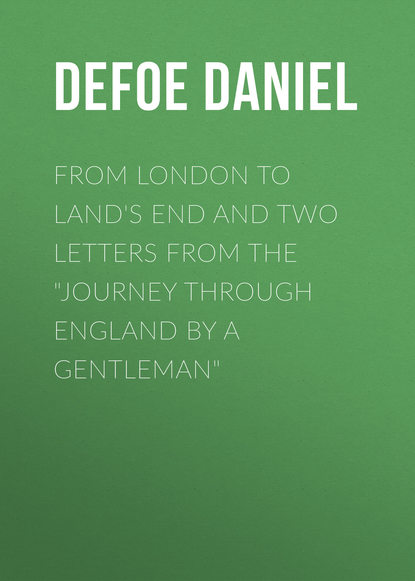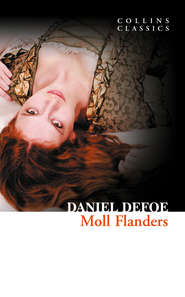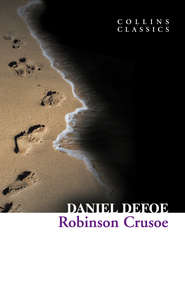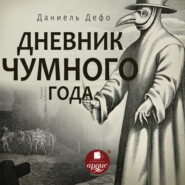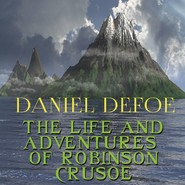По всем вопросам обращайтесь на: info@litportal.ru
(©) 2003-2024.
✖
From London to Land's End and Two Letters from the "Journey through England by a Gentleman"
Настройки чтения
Размер шрифта
Высота строк
Поля
Alresford was a flourishing market-town, and remarkable for this – that though it had no great trade, and particularly very little, if any, manufactures, yet there was no collection in the town for the poor, nor any poor low enough to take alms of the parish, which is what I do not think can be said of any town in England besides.
But this happy circumstance, which so distinguished Alresford from all her neighbours, was brought to an end in the year – , when by a sudden and surprising fire the whole town, with both the church and the market-house, was reduced to a heap of rubbish; and, except a few poor huts at the remotest ends of the town, not a house left standing. The town is since that very handsomely rebuilt, and the neighbouring gentlemen contributed largely to the relief of the people, especially by sending in timber towards their building; also their market-house is handsomely built, but the church not yet, though we hear there is a fund raising likewise for that.
Here is a very large pond, or lake of water, kept up to a head by a strong batter d’eau, or dam, which the people tell us was made by the Romans; and that it is to this day part of the great Roman highway which leads from Winchester to Alton, and, as it is supposed, went on to London, though we nowhere see any remains of it, except between Winchester and Alton, and chiefly between this town and Alton.
Near this town, a little north-west, the Duke of Bolton has another seat, which, though not large, is a very handsome beautiful palace, and the gardens not only very exact, but very finely situate, the prospect and vistas noble and great, and the whole very well kept.
From hence, at the end of seven miles over the Downs, we come to the very ancient city of Winchester; not only the great church (which is so famous all over Europe, and has been so much talked of), but even the whole city has at a distance the face of venerable, and looks ancient afar off; and yet here are many modern buildings too, and some very handsome; as the college schools, with the bishop’s palace, built by Bishop Morley since the late wars – the old palace of the bishop having been ruined by that known church incendiary Sir William Waller and his crew of plunderers, who, if my information is not wrong, as I believe it is not, destroyed more monuments of the dead, and defaced more churches, than all the Roundheads in England beside.
This church, and the schools also are accurately described by several writers, especially by the “Monasticon,” where their antiquity and original is fully set forth. The outside of the church is as plain and coarse as if the founders had abhorred ornaments, or that William of Wickham had been a Quaker, or at least a Quietist. There is neither statue, nor a niche for a statue, to be seen on all the outside; no carved work, no spires, towers, pinnacles, balustrades, or anything; but mere walls, buttresses, windows, and coigns necessary to the support and order of the building. It has no steeple, but a short tower covered flat, as if the top of it had fallen down, and it had been covered in haste to keep the rain out till they had time to build it up again.
But the inside of the church has many very good things in it, and worth observation; it was for some ages the burying-place of the English Saxon kings, whose reliques, at the repair of the church, were collected by Bishop Fox, and being put together into large wooden chests lined with lead were again interred at the foot of the great wall in the choir, three on one side, and three on the other, with an account whose bones are in each chest. Whether the division of the reliques might be depended upon, has been doubted, but is not thought material, so that we do but believe they are all there.
The choir of the church appears very magnificent; the roof is very high, and the Gothic work in the arched part is very fine, though very old; the painting in the windows is admirably good, and easy to be distinguished by those that understand those things: the steps ascending to the choir make a very fine show, having the statues of King James and his son King Charles, in copper, finely cast; the first on the right hand, and the other on the left, as you go up to the choir.
The choir is said to be the longest in England; and as the number of prebendaries, canons, &c., are many, it required such a length. The ornaments of the choir are the effects of the bounty of several bishops. The fine altar (the noblest in England by much) was done by Bishop Morley; the roof and the coat-of-arms of the Saxon and Norman kings were done by Bishop Fox; and the fine throne for the bishop in the choir was given by Bishop Mew in his lifetime; and it was well it was for if he had ordered it by will, there is reason to believe it had never been done – that reverend prelate, notwithstanding he enjoyed so rich a bishopric, scarce leaving money enough behind him to pay for his coffin.
There are a great many persons of rank buried in this church, besides the Saxon kings mentioned above, and besides several of the most eminent bishops of the See. Just under the altar lies a son of William the Conqueror, without any monument; and behind the altar, under a very fine and venerable monument, lies the famous Lord Treasurer Weston, late Earl of Portland, Lord High Treasurer of England under King Charles I. His effigy is in copper armour at full-length, with his head raised on three cushions of the same, and is a very magnificent work. There is also a very fine monument of Cardinal Beaufort in his cardinal’s robes and hat.
The monument of Sir John Cloberry is extraordinary, but more because it puts strangers upon inquiring into his story than for anything wonderful in the figure, it being cut in a modern dress (the habit gentlemen wore in those times, which, being now so much out of fashion, appears mean enough). But this gentleman’s story is particular, being the person solely entrusted with the secret of the restoration of King Charles II., as the messenger that passed between General Monk on one hand, and Mr. Montague and others entrusted by King Charles II. on the other hand; which he managed so faithfully as to effect that memorable event, to which England owes the felicity of all her happy days since that time; by which faithful service Sir John Cloberry, then a private musketeer only, raised himself to the honour of a knight, with the reward of a good estate from the bounty of the king.
Everybody that goes into this church, and reads what is to be read there, will be told that the body of the church was built by the famous William of Wickham; whose monument, intimating his fame, lies in the middle of that part which was built at his expense.
He was a courtier before a bishop; and, though he had no great share of learning, he was a great promoter of it, and a lover of learned men. His natural genius was much beyond his acquired parts, and his skill in politics beyond his ecclesiastic knowledge. He is said to have put his master, King Edward III., to whom he was Secretary of State, upon the two great projects which made his reign so glorious, viz.: – First, upon setting up his claim to the crown of France, and pushing that claim by force of arms, which brought on the war with France, in which that prince was three times victorious in battle. (2) Upon setting up, or instituting the Order of the Garter; in which he (being before that made Bishop of Winchester) obtained the honour for the Bishops of Winchester of being always prelates of the Order, as an appendix to the bishopric; and he himself was the first prelate of the Order, and the ensigns of that honour are joined with his episcopal ornaments in the robing of his effigy on the monument above.
To the honour of this bishop, there are other foundations of his, as much to his fame as that of this church, of which I shall speak in their order; but particularly the college in this city, which is a noble foundation indeed. The building consists of two large courts, in which are the lodgings for the masters and scholars, and in the centre a very noble chapel; beyond that, in the second court, are the schools, with a large cloister beyond them, and some enclosures laid open for the diversion of the scholars. There also is a great hall, where the scholars dine. The funds for the support of this college are very considerable; the masters live in a very good figure, and their maintenance is sufficient to support it. They have all separate dwellings in the house, and all possible conveniences appointed them.
The scholars have exhibitions at a certain time of continuance here, if they please to study in the new college at Oxford, built by the same noble benefactor, of which I shall speak in its order.
The clergy here live at large, and very handsomely, in the Close belonging to the cathedral; where, besides the bishop’s palace mentioned above, are very good houses, and very handsomely built, for the prebendaries, canons, and other dignitaries of this church. The Deanery is a very pleasant dwelling, the gardens very large, and the river running through them; but the floods in winter sometimes incommode the gardens very much.
This school has fully answered the end of the founder, who, though he was no great scholar, resolved to erect a house for the making the ages to come more learned than those that went before; and it has, I say, fully answered the end, for many learned and great men have been raised here, some of whom we shall have occasion to mention as we go on.
Among the many private inscriptions in this church, we found one made by Dr. Over, once an eminent physician in this city, on a mother and child, who, being his patients, died together and were buried in the same grave, and which intimate that one died of a fever, and the other of a dropsy:
“Surrepuit natum Febris, matrem abstulit Hydrops,
Igne Prior Fatis, Altera cepit Aqua.”
As the city itself stands in a vale on the bank, and at the conjunction of two small rivers, so the country rising every way, but just as the course of the water keeps the valley open, you must necessarily, as you go out of the gates, go uphill every wry; but when once ascended, you come to the most charming plains and most pleasant country of that kind in England; which continues with very small intersections of rivers and valleys for above fifty miles, as shall appear in the sequel of this journey.
At the west gate of this city was anciently a castle, known to be so by the ruins more than by any extraordinary notice taken of it in history. What they say of it, that the Saxon kings kept their court here, is doubtful, and must be meant of the West Saxons only. And as to the tale of King Arthur’s Round Table, which they pretend was kept here for him and his two dozen of knights (which table hangs up still, as a piece of antiquity to the tune of twelve hundred years, and has, as they pretend, the names of the said knights in Saxon characters, and yet such as no man can read), all this story I see so little ground to give the least credit to that I look upon it, and it shall please you, to be no better than a fib.
Where this castle stood, or whatever else it was (for some say there was no castle there), the late King Charles II. marked out a very noble design, which, had he lived, would certainly have made that part of the country the Newmarket of the ages to come; for the country hereabout far excels that of Newmarket Heath for all kinds of sport and diversion fit for a prince, nobody can dispute. And as the design included a noble palace (sufficient, like Windsor, for a summer residence of the whole court), it would certainly have diverted the king from his cursory journeys to Newmarket.
The plan of this house has received several alterations, and as it is never like to be finished, it is scarce worth recording the variety. The building is begun, and the front next the city carried up to the roof and covered, but the remainder is not begun. There was a street of houses designed from the gate of the palace down to the town, but it was never begun to be built; the park marked out was exceeding large, near ten miles in circumference, and ended west upon the open Downs, in view of the town of Stockbridge.
This house was afterwards settled, with a royal revenue also, as an appanage (established by Parliament) upon Prince George of Denmark for his life, in case he had out-lived the queen; but his Royal Highness dying before her Majesty, all hope of seeing this design perfected, or the house finished, is now vanished.
I cannot omit that there are several public edifices in this city and in the neighbourhood, as the hospitals and the building adjoining near the east gate; and towards the north a piece of an old monastery undemolished, and which is still preserved to the religion, being the residence of some private Roman Catholic gentlemen, where they have an oratory, and, as they say, live still according to the rules of St. Benedict. This building is called Hide House; and as they live very usefully, and to the highest degree obliging among their neighbours, they meet with no obstruction or disturbance from anybody.
Winchester is a place of no trade other than is naturally occasioned by the inhabitants of the city and neighbouring villages one with another. Here is no manufacture, no navigation; there was indeed an attempt to make the river navigable from Southampton, and it was once made practicable, but it never answered the expense so as to give encouragement to the undertakers.
Here is a great deal of good company, and abundance of gentry being in the neighbourhood, it adds to the sociableness of the place. The clergy also here are, generally speaking, very rich and very numerous.
As there is such good company, so they are gotten into that new-fashioned way of conversing by assemblies. I shall do no more than mention them here; they are pleasant and agreeable to the young peoples, and sometimes fatal to them, of which, in its place, Winchester has its share of the mirth. May it escape the ill-consequences!
The hospital on the south of this city, at a mile distant on the road to Southampton, is worth notice. It is said to be founded by King William Rufus, but was not endowed or appointed till later times by Cardinal Beaufort. Every traveller that knocks at the door of this house in his way, and asks for it, claims the relief of a piece of white bread and a cup of beer, and this donation is still continued. A quantity of good beer is set apart every day to be given away, and what is left is distributed to other poor, but none of it kept to the next day.
How the revenues of this hospital, which should maintain the master and thirty private gentlemen (whom they call Fellows, but ought to call Brothers), is now reduced to maintain only fourteen, while the master lives in a figure equal to the best gentleman in the country, would be well worth the inquiry of a proper visitor, if such can be named. It is a thing worthy of complaint when public charities, designed for the relief of the poor, are embezzled and depredated by the rich, and turned to the support of luxury and pride.
From Winchester is about twenty-five miles, and over the most charming plains that can anywhere be seen (far, in my opinion, excelling the plains of Mecca), we come to Salisbury. The vast flocks of sheep which one everywhere sees upon these Downs, and the great number of those flocks, is a sight truly worth observation; it is ordinary for these flocks to contain from three thousand to five thousand in a flock, and several private farmers hereabouts have two or three such flocks.
But it is more remarkable still how a great part of these Downs comes, by a new method of husbandry, to be not only made arable (which they never were in former days), but to bear excellent wheat, and great crops, too, though otherwise poor barren land, and never known to our ancestors to be capable of any such thing – nay, they would perhaps have laughed at any one that would have gone about to plough up the wild downs and hills where the sheep were wont to go. But experience has made the present age wiser and more skilful in husbandry; for by only folding the sheep upon the ploughed lands – those lands which otherwise are barren, and where the plough goes within three or four inches of the solid rock of chalk, are made fruitful and bear very good wheat, as well as rye and barley. I shall say more of this when I come to speak of the same practice farther in the country.
This plain country continues in length from Winchester to Salisbury (twenty-five miles), from thence to Dorchester (twenty-two miles), thence to Weymouth (six miles); so that they lie near fifty miles in length and breadth; they reach also in some places thirty-five to forty miles. They who would make any practicable guess at the number of sheep usually fed on these Downs may take it from a calculation made, as I was told, at Dorchester, that there were six hundred thousand sheep fed within six miles of that town, measuring every way round and the town in the centre.
As we passed this plain country, we saw a great many old camps, as well Roman as British, and several remains of the ancient inhabitants of this kingdom, and of their wars, battles, entrenchments, encampments, buildings, and other fortifications, which are indeed very agreeable to a traveller that has read anything of the history of the country. Old Sarum is as remarkable as any of these, where there is a double entrenchment, with a deep graff or ditch to either of them; the area about one hundred yards in diameter, taking in the whole crown of the hill, and thereby rendering the ascent very difficult. Near this there is one farm-house, which is all the remains I could see of any town in or near the place (for the encampment has no resemblance of a town), and yet this is called the borough of Old Sarum, and sends two members to Parliament. Whom those members can justly say they represent would be hard for them to answer.
Some will have it that the old city of Sorbiodunum or Salisbury stood here, and was afterwards (for I know not what reasons) removed to the low marshy grounds among the rivers, where it now stands. But as I see no authority for it other than mere tradition, I believe my share of it, and take it ad referendum.
Salisbury itself is indeed a large and pleasant city, though I do not think it at all the pleasanter for that which they boast so much of – namely, the water running through the middle of every street – or that it adds anything to the beauty of the place, but just the contrary; it keeps the streets always dirty, full of wet and filth and weeds, even in the middle of summer.
The city is placed upon the confluence of two large rivers, the Avon and the Willy, neither of them considerable rivers, but very large when joined together, and yet larger when they receive a third river (viz., the Naddir), which joins them near Clarendon Park, about three miles below the city; then, with a deep channel and a current less rapid, they run down to Christchurch, which is their port. And where they empty themselves into the sea, from that town upwards towards Salisbury they are made navigable to within two miles, and might be so quite into the city, were it not for the strength of the stream.
As the city of Winchester is a city without trade – that is to say, without any particular manufactures – so this city of Salisbury and all the county of Wilts, of which it is the capital, are full of a great variety of manufactures, and those some of the most considerable in England – namely, the clothing trade and the trade of flannels, druggets, and several other sorts of manufactures, of which in their order.
The city of Salisbury has two remarkable manufactures carried on in it, and which employ the poor of great part of the country round – namely, fine flannels, and long-cloths for the Turkey trade, called Salisbury whites. The people of Salisbury are gay and rich, and have a flourishing trade; and there is a great deal of good manners and good company among them – I mean, among the citizens, besides what is found among the gentlemen; for there are many good families in Salisbury besides the citizens.
This society has a great addition from the Close – that is to say, the circle of ground walled in adjacent to the cathedral; in which the families of the prebendaries and commons, and others of the clergy belonging to the cathedral, have their houses, as is usual in all cities, where there are cathedral churches. These are so considerable here, and the place so large, that it is (as it is called in general) like another city.
The cathedral is famous for the height of its spire, which is without exception the highest and the handsomest in England, being from the ground 410 feet, and yet the walls so exceeding thin that at the upper part of the spire, upon a view made by the late Sir Christopher Wren, the wall was found to be less than five inches thick; upon which a consultation was had whether the spire, or at least the upper part of it, should be taken down, it being supposed to have received some damage by the great storm in the year 1703; but it was resolved in the negative, and Sir Christopher ordered it to be so strengthened with bands of iron plates as has effectually secured it; and I have heard some of the best architects say it is stronger now than when it was first built.
They tell us here long stories of the great art used in laying the first foundation of this church, the ground being marshy and wet, occasioned by the channels of the rivers; that it was laid upon piles, according to some, and upon woolpacks, according to others. But this is not supposed by those who know that the whole country is one rock of chalk, even from the tops of the highest hills to the bottom of the deepest rivers.
They tell us this church was forty years a-building, and cost an immense sum of money; but it must be acknowledged that the inside of the work is not answerable in the decoration of things to the workmanship without. The painting in the choir is mean, and more like the ordinary method of common drawing-room or tavern painting than that of a church; the carving is good, but very little of it; and it is rather a fine church than finely set off.
The ordinary boast of this building (that there were as many gates as months, as many windows as days, as many marble pillars as hours in the year) is now no recommendation at all. However, the mention of it must be preserved: —
“As many days as in one year there be,
So many windows in one church we see;
As many marble pillars there appear
As there are hours throughout the fleeting year;
As many gates as moons one year do view:
Strange tale to tell, yet not more strange than true.”
There are, however, some very fine monuments in this church; particularly one belonging to the noble family of Seymours, since Dukes of Somerset (and ancestors of the present flourishing family), which on a most melancholy occasion has been now lately opened again to receive the body of the late Duchess of Somerset, the happy consort for almost forty years of his Grace the present Duke, and only daughter and heiress of the ancient and noble family of Percy, Earls of Northumberland, whose great estate she brought into the family of Somerset, who now enjoy it.





